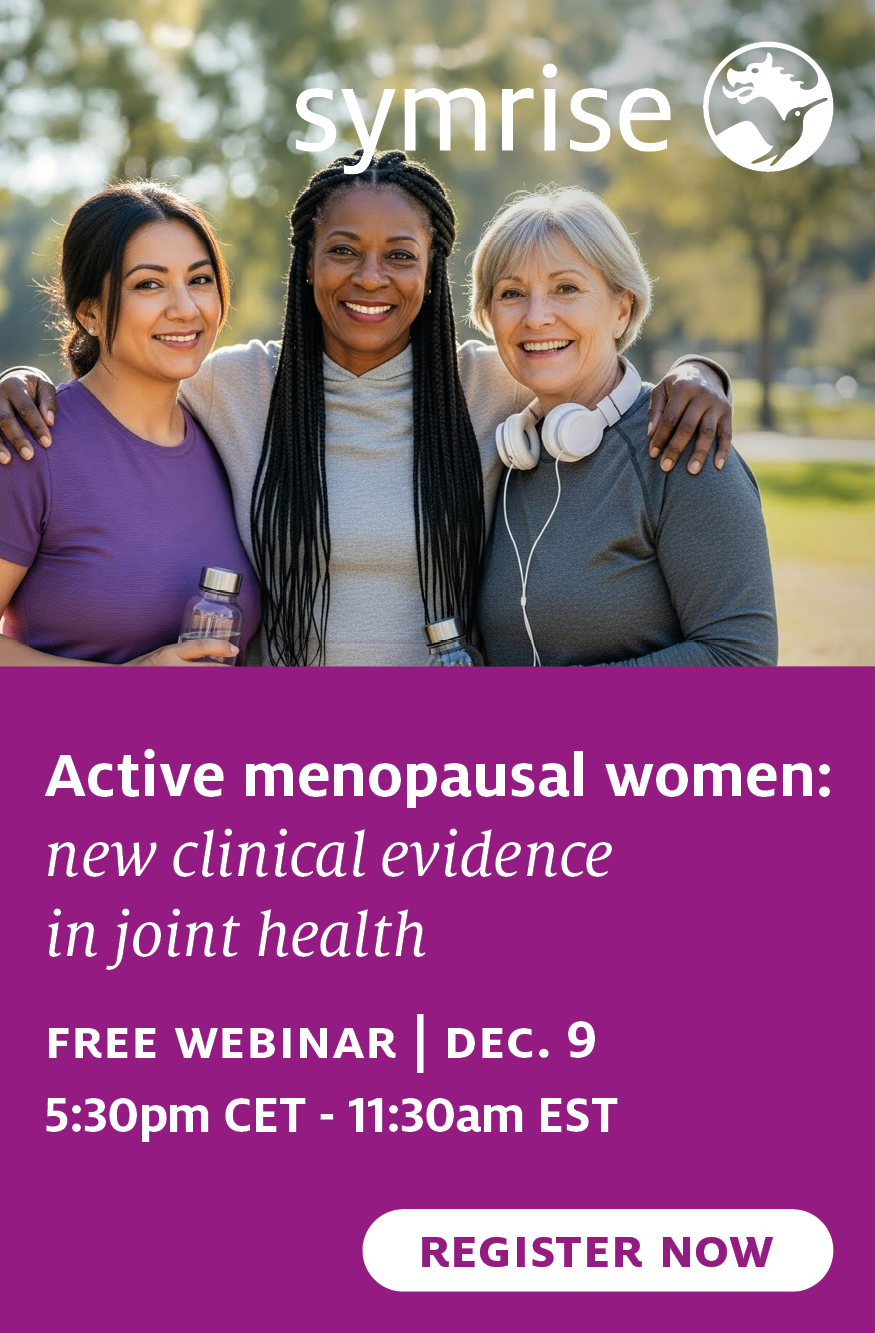Beyond omega 3: Diverse fatty acid ingredients drive novel applications
11 Aug 2021 --- The rise of lesser-known fatty acid ingredients is creating new applications beyond heart health, like sports nutrition and immunity. However, industry experts tell NutritionInsight that consumer awareness remains a key challenge, as well as bioavailability and other formulation considerations.
“While ARA, DHA and EPA are all vital for human health and development, these fatty acids vary in a few important ways,” explains Brent MacDonald, director of global marketing, nutritional lipids, DSM.
Of the three, ALA is the smallest with 18 carbon atoms, and DHA is the longest with 22 carbon atoms. The health benefits associated with omega 3s are largely from EPA and DHA, adds Beatriz Botija Ródenas, product manager of probiotics at Biosearch Life.

Furthermore, omega 3s and omega 6s are, for instance, derived from different sources. Omega 6 is mainly consumed in the diet through vegetable oils, whereas omega 3s are generally found in fatty fish such as salmon, tuna and mackerel. They also offer different health benefits.
“While omega 3 is clearly the central focus for the connection between the fatty acids and health, balancing the intake of the omegas 6, 7 and 9 should not be forgotten and deserve to be understood a little better,” explains Laura Headley, nutritional scientist for the Advanced Food Ingredients business at Evonik Health Care. ALA is the parent fatty acid of the omega 3 series and is a precursor for DHA and EPA.
ALA is the parent fatty acid of the omega 3 series and is a precursor for DHA and EPA.
Distinguishing omega varieties
The prevailing Western-style diet offers only minimal opportunities to consume omega 3. “Over the past decades, there has been a significant shift in the ratio between omega 3 and 6 in the diet, to which the longer-term health effects need to be further understood,” Headley continues.
Another distinction between types of dietary fatty acids is saturated versus unsaturated. “Omega 3 and 6 are both polyunsaturated fats. In omega 6s, the molecule where the final unsaturation occurs at the sixth carbon from the end. For omega 3s, it’s at the third carbon from the end,” explains Ródenas.
“There are many omega 3 choices on the market, and it’s important to understand that not all omega 3s are created equal,” adds Thomas Repstad, EMELA and ASEAN marketing manager at Aker BioMarine.
Numerous health benefits
Various fatty acids are associated with a host of benefits. For example, there is a large body of research supporting the role of DHA and ARA in promoting optimal growth and development during the first 1,000 days of life – between the onset of pregnancy and the child’s second birthday – providing a healthy foundation into childhood and beyond.
Meanwhile, EPA and DHA have been shown to support health throughout life. Ródenas notes that people with higher levels of EPA and DHA tend to have a reduced risk for heart attack and coronary heart disease, as well as a lower risk for all-cause mortality.
Furthermore, DHA is concentrated in the retina of the eye and in the brain, which is why it’s so important during pregnancy and early childhood for proper development of the brain and eyes.
“It’s not just important in development, but also to help prevent cognitive decline and protect the eye from conditions such as dry eye and macular degeneration,” Ródenas continues.  Fatty acids can target healthy aging elements like brain, eye and joint health.
Fatty acids can target healthy aging elements like brain, eye and joint health.
Unlocking new applications
With EPA and DHA already well-known for heart, brain and eye health, new science also points to lesser-known benefits, including optimizing immunity, sports performance, mood and sleep quality, notes MacDonald.
“The COVID-19 pandemic has put the spotlight on health, propelling consumers toward an even greater sense of healthy living and spurring a sharp growth in dietary supplements globally. In fact, more and more people are continuing to turn to products that support immune health, as well as overall health and well-being,” argues Repstad.
He continues that while there are many dietary supplements on store shelves that help benefit general health, omega 3 fatty acids are becoming a larger part of that conversation.
Specifically, research is pointing to the benefits of krill oil beyond heart health. Repstad says that since krill oil is a natural phospholipid complex of omega 3 and choline, it acts more as a multi-nutrient supplement.
“In fact, krill oil’s phospholipid-bound omega 3s and choline are important for brain, joint and liver health, and even have beneficial effects on skin hydration and muscle activation in sports performance.”
Consumers lack awareness
A 2019 DSM consumer insights survey revealed that despite 71 percent of consumers being familiar with omega 3 supplements, only 33 percent currently take a product regularly.
As 83 percent of the global population live in countries where the average intake of EPA and DHA is below the minimum WHO guidelines, manufacturers must develop strategies to overcome these barriers in order to help consumers to increase their intake and support health and well-being across the globe.
“People often lack awareness of the health benefits provided by omega 3 fatty acids, which can be exacerbated by the fact that these benefits are not necessarily tangible or easily detected by the consumer,” explains MacDonald.
Messaging – both on-pack and as part of marketing campaigns – can help manufacturers to create products that catch the eye of consumers, enabling them to stand out on the shelves. Many consumers associate omega 3 supplements with unpleasant smells and tastes.
Many consumers associate omega 3 supplements with unpleasant smells and tastes.
Overcoming formulation hurdles
Fatty acids can also present challenges in terms of formulation, for example, related to bioavailability.
Headley of Evonik explains that a majority of omega 3 fish oil supplements currently available to consumers are supplied either as ethyl ester or triglyceride.
However, ethyl ester-based omega 3s are well-known to require a lengthy digestion process in the gut before absorption can occur. If consumed on an empty stomach, clinical trials indicate that there will be minimal absorption of omega 3 into the body.
Bioavailable and taste-friendly offerings
In contrast to ethyl ester-based omega 3s, the free fatty acid form has long been known to have superior bioavailability when compared to both ethyl esters and triglyceride forms of omega 3, as they require no enzymatic processing in the gut before absorption.
“However, their vulnerability to oxidation has previously made formulation difficult. An omega 3 fatty acid lysine complex like our AvailOm overcomes these challenges, resulting in a highly bioavailable free fatty acid-based omega 3 powder with a four-year shelf life.”
Meanwhile, MacDonald emphasizes that optimizing sensory appeal is also crucial for omega 3 product development. Due to the traditional use of fish oil, omega 3 supplements are linked to having an unpleasant smell or aftertaste that many consumers prefer to avoid.
To address this, DSM’s Life’s Omega triglyceride EPA and DHA source is plant-based and is steam deodorized to minimize fishy taste and smell.
The road ahead
Casting his gaze to the future, MacDonald anticipates that ongoing research into omega 3 and omega 6 fatty acids will continue to drive interest and demand for these essential nutrients.
“This will help more consumers to see their importance and ultimately have a positive impact on supplement sales worldwide. With this continued interest and growing demand, there will be a greater need for alternative sources of EPA and DHA beyond traditional fish oils,” he explains.
Headley also flags that there are “many exciting” areas left to explore for omega 3. “However, data coming out from trials involving other fatty acids are building a momentum of their own and indicating that there are health benefits to be gained besides omega 3s.”
It will also be important to keep pushing forward in finding novel combinations of fatty acids that can bring synergistic benefits, she argues.
For Repstad, personalization will impact the fatty acid sector. “Consumers have been and will continue looking for products that are right for them. With the plethora of products on shelves, it’s important for brands to differentiate what makes their products stand out from others. Education is key and will continue to be,” he concludes.
By Katherine Durrell













